1. Short Circuit
What is short circuit condition?
An electrical short circuit is the most
common cause of accidental fires in domestic, commercial and industrial
buildings. It occurs when the abnormal conditions takes place in the
electrical circuit like over current, insulation failures, human
contacts, over voltages etc. In this article some of the short circuit
fire and overvoltage prevention methods are discussed.
Electrical Short Circuit Prevention
Proper Electric Connections
100% of electrical short circuit
originated fire is owing to poor knowledge of electrician or his
carelessness. Most of the electricians learn by becoming a helper to an
experienced one and lack heavily getting the basic electrical idea.
In a domestic application for 3 phase 4
wire supply, electricians use the 4 MCB combination called the TPN
instead of 3 MCB combination. It is the root cause of fire originating
from electrical problems. So never allow the neutral to pass through a
switch.
Well, the reason for why 3 MCB type is
the best is explained below. For TPN (three poles plus Neutral) 3 are
MCBs which can trip on exceeding rated current and the 4th one is just a
switch for neutral. It does not sense any current. For any reason
suppose the neutral gets disconnected at the house end in the TPN, the
phase that is less loaded may experience a voltage shoot-up to 50% plus
or more. This means that the single phase load would be about 350 volts
as against 220 volts. Many gadgets will burn in no time and items like a
tube light with iron choke may catch fire. Imagine, one is not at home
during that instant and there is a wardrobe nearby! This is one of the
major reasons for fire breakout. The situation is also same with a 3 MCB
if the neutral gets loosened. So be very careful to make sure that the
neutral neither passes through a switch in a three phase installation nor allow the neutral to become loose.
Let us mathematically calculate. One
lamp is 100 watt in one phase to neutral and another 10 watt connected
from another phase to neutral. Assume both of them to get 220 RMS from a
3 phase balanced supply. Now let us disconnect the neutral. So both the
lamps are in series across phase to phase i.e. facing a voltage of 220 X
√3= 381 volts. Now calculate the voltage drop across each lamp while
one resistance is 484 and the other is 4840. Now I=381/(484+4840) or
I=381/5324 or I= 0.071. Now the V faced by the 100 watt lamp= IR= 34
Volts and the V faced by the 10 watt lamp = 340 Volts. I have not taken
into consideration the cold resistance of lamp which is 10 times less
than the hot resistance (meaning while glowing). If that is taken into
consideration the 10 watt lamp will fail in seconds.
Short Circuit Protection in Embedded System Power Supply
It is often seen that while powering a
newly assembled circuit the power supply section itself develops some
fault possibly because of some short circuit. The circuit developed
below eliminates that problem by isolating the embedded section to that
of other auxiliary sections. Thus, if the fault lies in that section,
the embedded section remains unaffected. The embedded section comprising
of microcontroller draws 5 Volt power from A, while the rest of the
circuit draws from B.
Some ammeters, volt meters and a push
button switch are used in the circuit to find the result in a test
circuit in simulation .In real time use such meters are not required. Q1
is the main powering switching transistor to the auxiliary sections
from B. Load is shown as a 100R load and a test switch in the form of a
push button is used for checking the functioning of the circuit.
Transistor BD140 or SK100 and BC547 are used to derive the secondary
output of around 5V B from the main 5V supply A.
When the 5V DC output from regulator IC
7805 is available, transistor BC547 conducts through resistors R1 and R3
and LED1. As a result, transistor SK100 conducts and short-circuit
protected 5V DC output appears across B terminals. The green LED (D2)
glows to indicate the same, while the red LED (D1) remains off due to
the presence of the same voltage at both of its ends. When B terminals
short, BC547 cuts off due to grounding of its base. As a result, SK100
is also cut-off. Thus during short-circuit, the green LED (D2) turns off
and the red LED (D1) glows. Capacitors C2 and C3 across the main 5V
output A absorb the voltage fluctuations occurring due to short-circuit
in B, ensuring disturbance-free A. The design of the circuit is based on
the relationship given below: RB = (HFE X Vs)/(1.3 X IL) where, RB =
Base resistances of transistors of SK100 and BC547 HFE = 200 for SK100
and 350 for BC547 Switching Voltage Vs = 5V 1.3 = Safety factor IL =
Collector-emitter current of transistors Assemble the circuit on a
general- purpose PCB and enclose in a suitable cabinet. Connect the
terminals A and B on the front panel of the cabinet. Also connect the
mains power cord to feed 230V AC to the transformer. Connect D1 and D2
for visual indication.
Short Circuit Indicator along with Regulated Power Supply
A regulated power supply is the most
important requirement for the operation of many electronic appliances
which need a constant DC power supply for their operation. Systems like a
laptop or a cell phone or a computer requires a regulated DC supply to
power its circuitry. One of the ways to provide a DC supply is using a
battery. However the basic constraint is the limited battery life time.
Another way is using an AC- DC converter.
Normally an AC-DC converter consists of a rectifier section, which consists of diodes and produces a pulsating DC signal. This pulsating DC signal is filtered using a capacitor to remove the ripples and then this filtered signal is regulated using any regulator IC.
Normally an AC-DC converter consists of a rectifier section, which consists of diodes and produces a pulsating DC signal. This pulsating DC signal is filtered using a capacitor to remove the ripples and then this filtered signal is regulated using any regulator IC.
A
12 volt power supply circuit with short circuit indication has been
designed. Here is a 12 volt work bench power supply to test the
prototypes. It gives well regulated 12 volts DC to power majority of
circuits and also for the bread board assembly. An Add-on circuit of
Short circuit indication is also included to detect the short circuit in
the prototype if any. This helps to switch off the power supply
immediately to save the components.
It contains the following components:
- A 500mA transformer to step down the ac voltage.
- A 7812 regulator IC providing 12V regulated output.
- A buzzer to indicate the short circuit.
- 3 diodes- 2 forming part of a full wave rectifier and one to limit current through the resistor.
- Two transistors to supply current to the buzzer.
A 14-0-14, 500 milli ampere transformer
is used to step down the 230 volt AC. Diodes D1 and D2 are rectifiers
and C1 is the smoothing capacitor to make the DC ripple free. IC1 is the
7812 positive voltage regulator to give 12 volts regulated output.
Capacitors C2 and C3 reduces the transients in the power supply. From
the output of IC1, 12 volts regulated DC will be available. The short
circuit indicator is built using two NPN transistors T1 and T2 with a
buzzer, a diode and two resistors R1 and R2.
In normal operation, the ac signal is
step down using the transformer. The diodes rectify the ac signal, i.e.
produce a pulsating dc signal, which is filtered by the capacitor C1 to
remove the filters and this filtered signal is regulated using LM7812.
As current passes through the circuit, transistor T2 gets enough voltage
at its base to be switched on and the transistor T1 is connected to
ground potential and hence is in off condition and the buzzer is off. .
When there a short circuit at the output, the diode starts conducting
the current through R2 drops and T2 switches off. This allows T1 to
conduct and the buzzer beeps, thus indicating the short circuit
occurrence.
2. Overvoltage Protection
Over voltages due to surges or lightening causes insulation failure which in turn leads to severe consequences.
2 ways of Overvoltage protection
- By taking preventive measures during the construction of buildings and electrical installations. It is done by making sure that the electrical appliances with different voltage ratings are placed separately. The individual phases can also be split up according to their functionality to avoid interruption of the phases.
- By using overvoltage protection components or circuits: These circuits normally quench the over voltages, i.e. cause a short circuit across them before it reaches the electrical appliances. They should have a fast response and a high current carrying capacity.
Over Voltage Protector
Over voltages are extremely high
voltages which are generally above the prescribed voltage ratings of the
electrical and electronic devices and can cause complete disruption of
the device insulation (from earth or other voltage carrying components)
and thus damage the devices. These over voltages occur due to factors
like lightning, electrical discharge, transient and faulty switching. To
control this, an over voltage protection circuit is often needed.
Designing a simple over Voltage Protection Circuitry
Here is a simple over voltage protector
circuit that breaks the power to the load if the voltage increases
above the preset level. The power will be restored only if the voltage
drops to normal level. This kind of circuit is used in voltage
stabilizers as over load protection.
The circuit uses the following components:
- A regulated power supply consisting of 0-9V step down transformer, diode D1 and a smoothing capacitor.
- A Zener diode to control the relay driver.
Working of the system
Any voltage increase in the Primary of
the transformer (as the mains voltage increases) will reflect as a
corresponding voltage increase in its secondary also. This principle is
used in the circuit to trigger the relay. When the input voltage to the
primary of the transformer (around 230 volts), Zener will be out of
conduction (as set by VR1) and the relay will be in the de- energized
condition. The Load will get power through the common and the NC
contacts of the Relay. In this state, LED will be off.
When the voltage increases, Zener diode
conducts and the relay will be activated. This breaks the power supply
to the load. LED shows the activation status of the relay. Capacitor C1
acts as a buffer at the base of T1 for the smooth working of T1 to
prevent relay clicking during its activation/deactivation.
Load is connected through the Common and
the NC (Normally Connected) contacts of the relay as shown in the
diagram. Neutral should go directly to the load.
Before connecting the load, slowly
adjust VR1 till LED just turns off assuming that the lines voltage is
between 220-230 volts. If necessary, check the line voltage using an AC
volt meter. The circuit is ready for use. Now connect the load. When the
voltage increases, Zener will conduct and actuates the relay. When the
lines voltage returns to normal, again the load will get power.
Another circuit for overvoltage
protection is discussed below which is also protects the electrical
loads against surge voltages.
Sometimes it so happens that a bench
power supply output remains no longer controlled because of a defect and
invariably it shoots up dangerously. Thus any load connected to that
shall be getting damaged in no time. This circuit gives complete
protection to that situation. The MOSFET is in series with the load. Its
gate gets drive always causing the drain and source to remain in
conduction as long as the IC1 set voltage at pin 1 is below the internal
reference voltage. In the event of higher voltage the voltage at pin
no1 of IC1 is above the reference voltage and that switches off the
MOSFET depriving of its gate drive to cause the drain and source as
open, to disconnect power to the load circuit.
Warning Signs of Power Supply Failure in a Circuit
While mains supply is available, for
testing the circuit a switch is used to provide power to the
transformer. The Q1 does not conduct as its base and emitter are at same
potential through D1 & D2 from the DC developed by the bridge
rectifier. That time the capacitor C1 and C2 get charged to Dc voltage
so derived. While the supply fails the C1 supplies emitter current to
the base of Q1 through R1.This results in capacitor C1 getting
discharged through Q1 emitter collector conducting via the buzzer. A
brief sound is thus generated every time the main supply fails till the
C1 gets fully discharged.

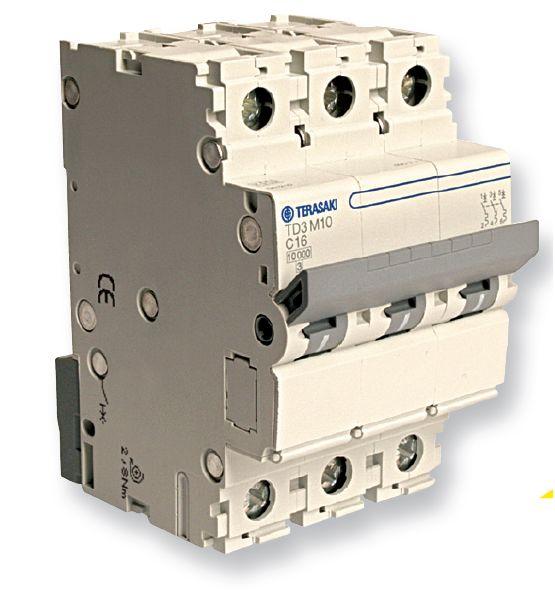
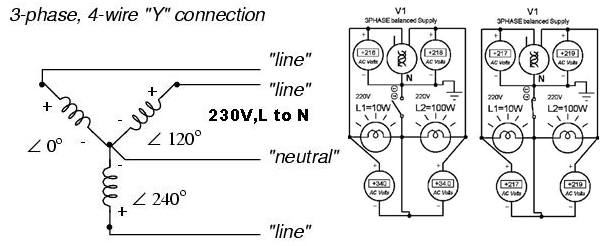

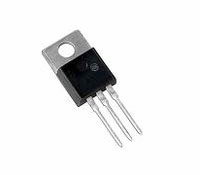
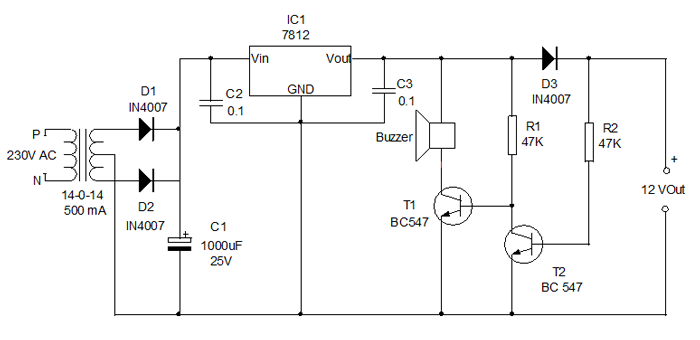
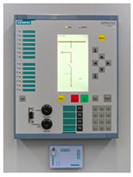



No comments:
Post a Comment